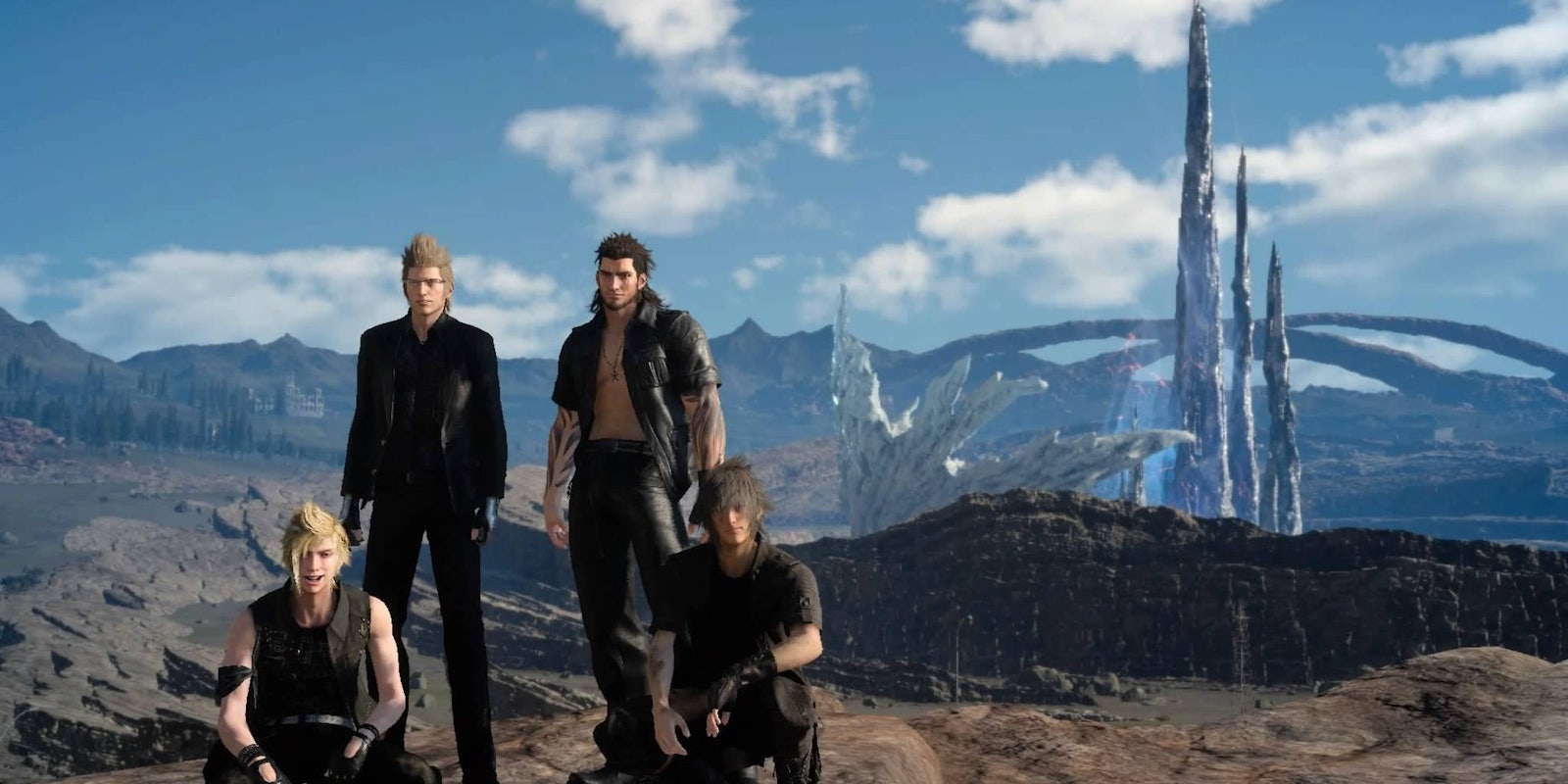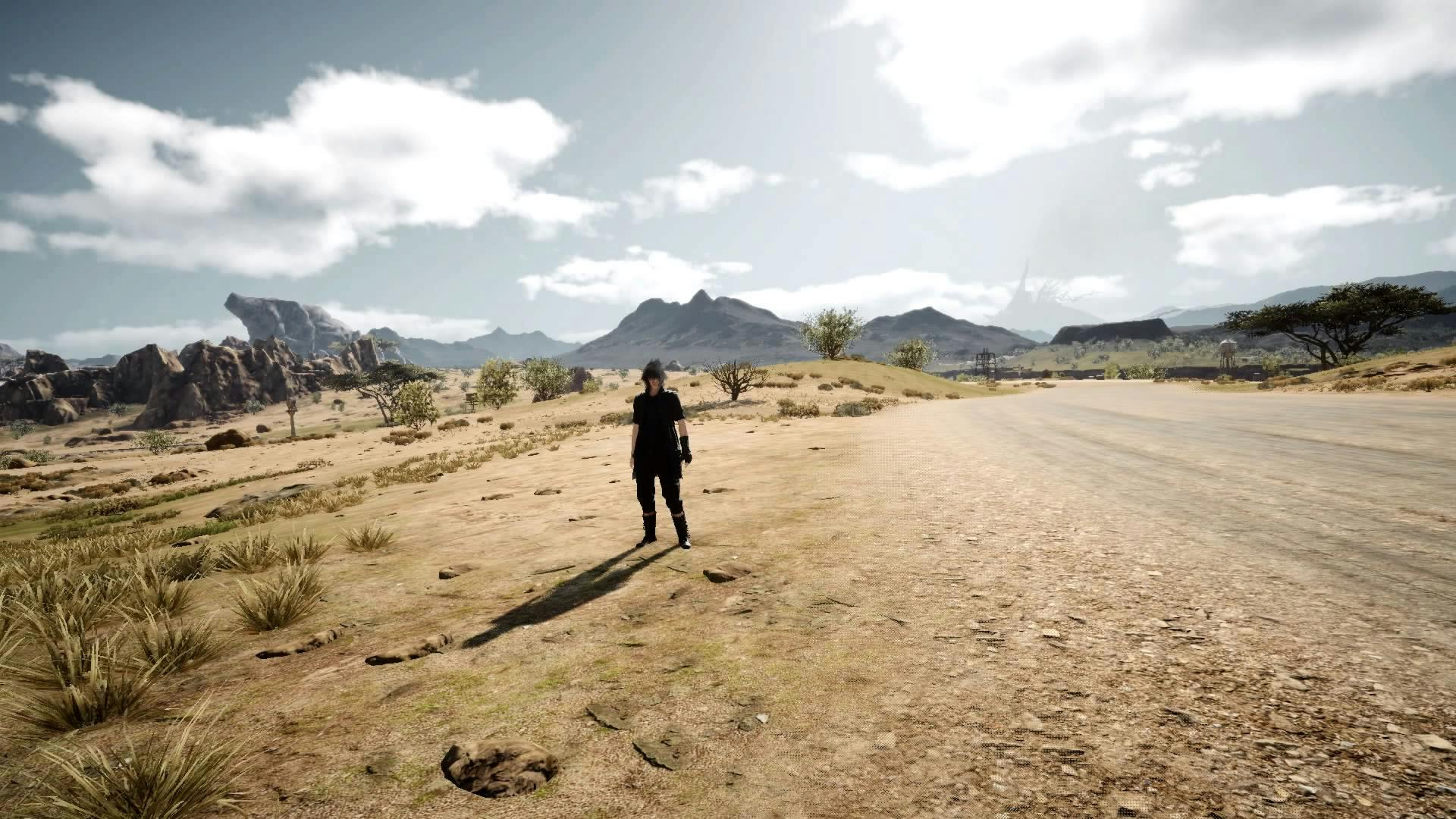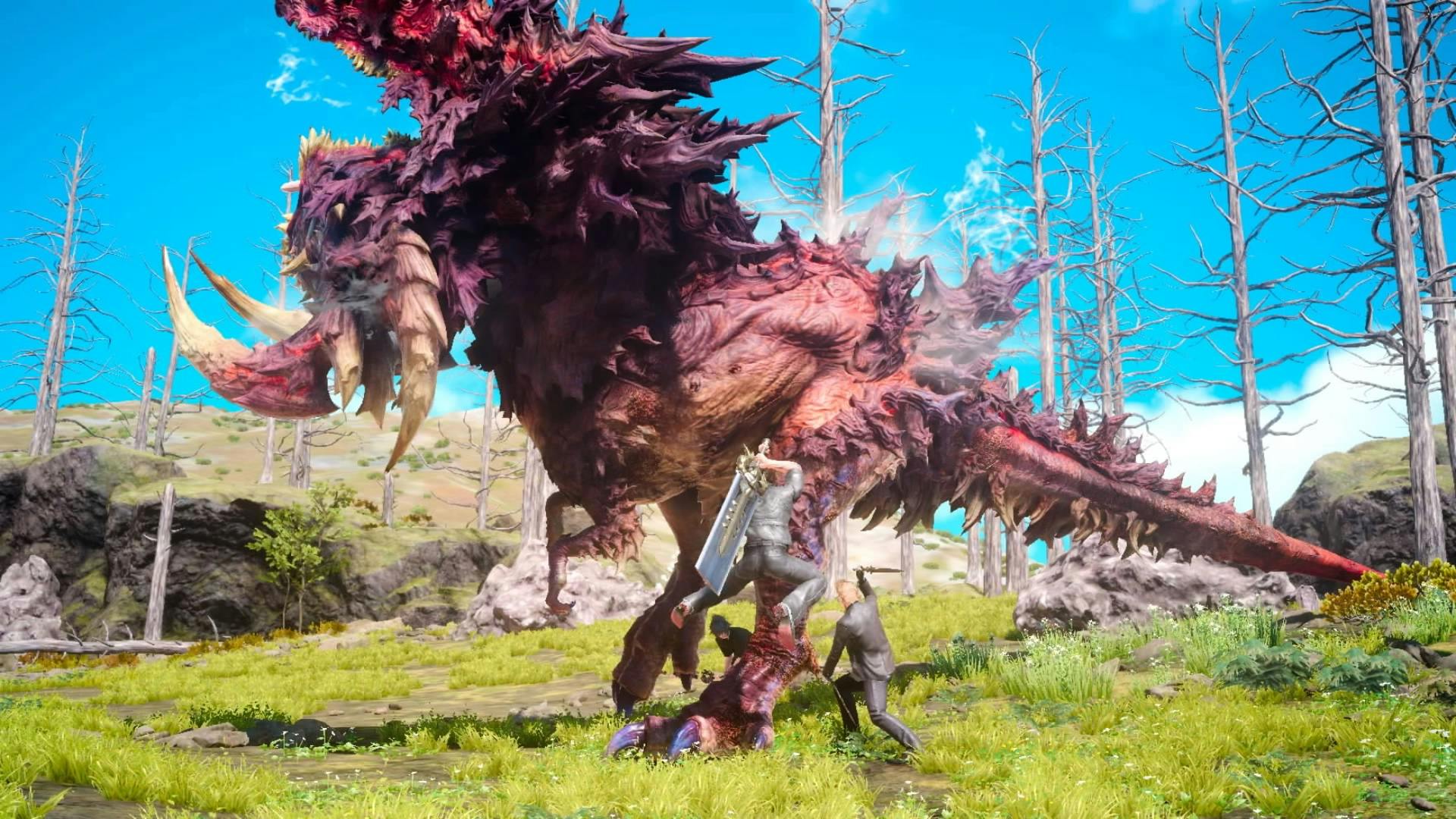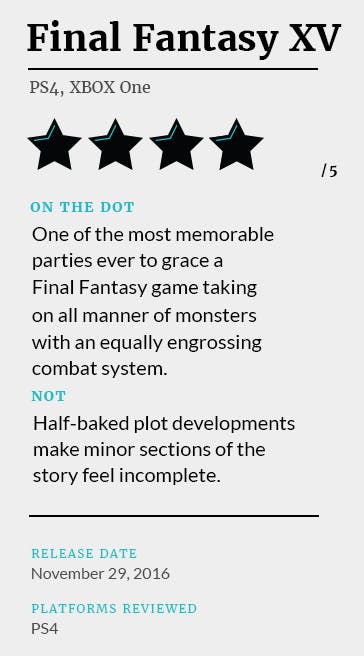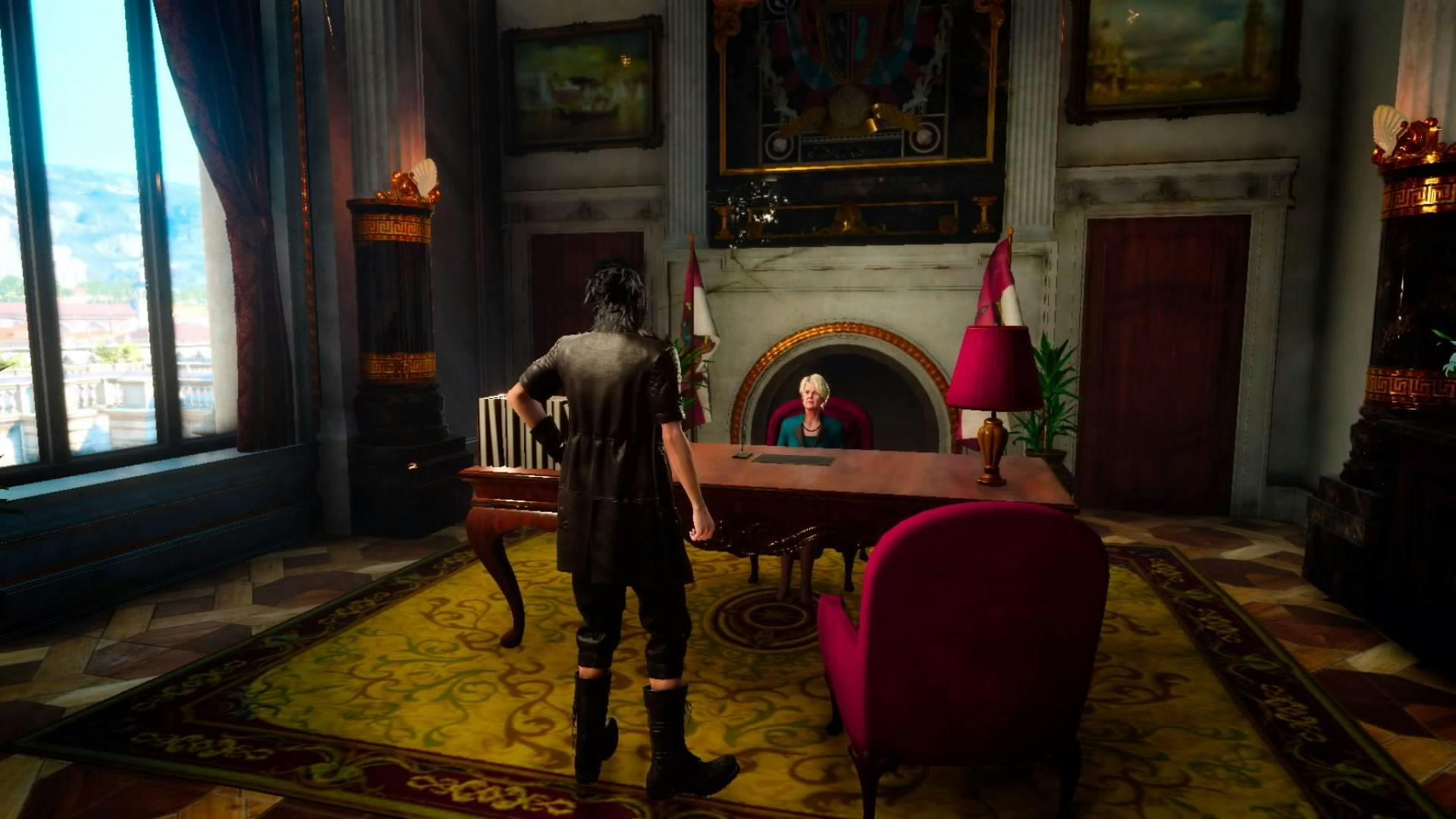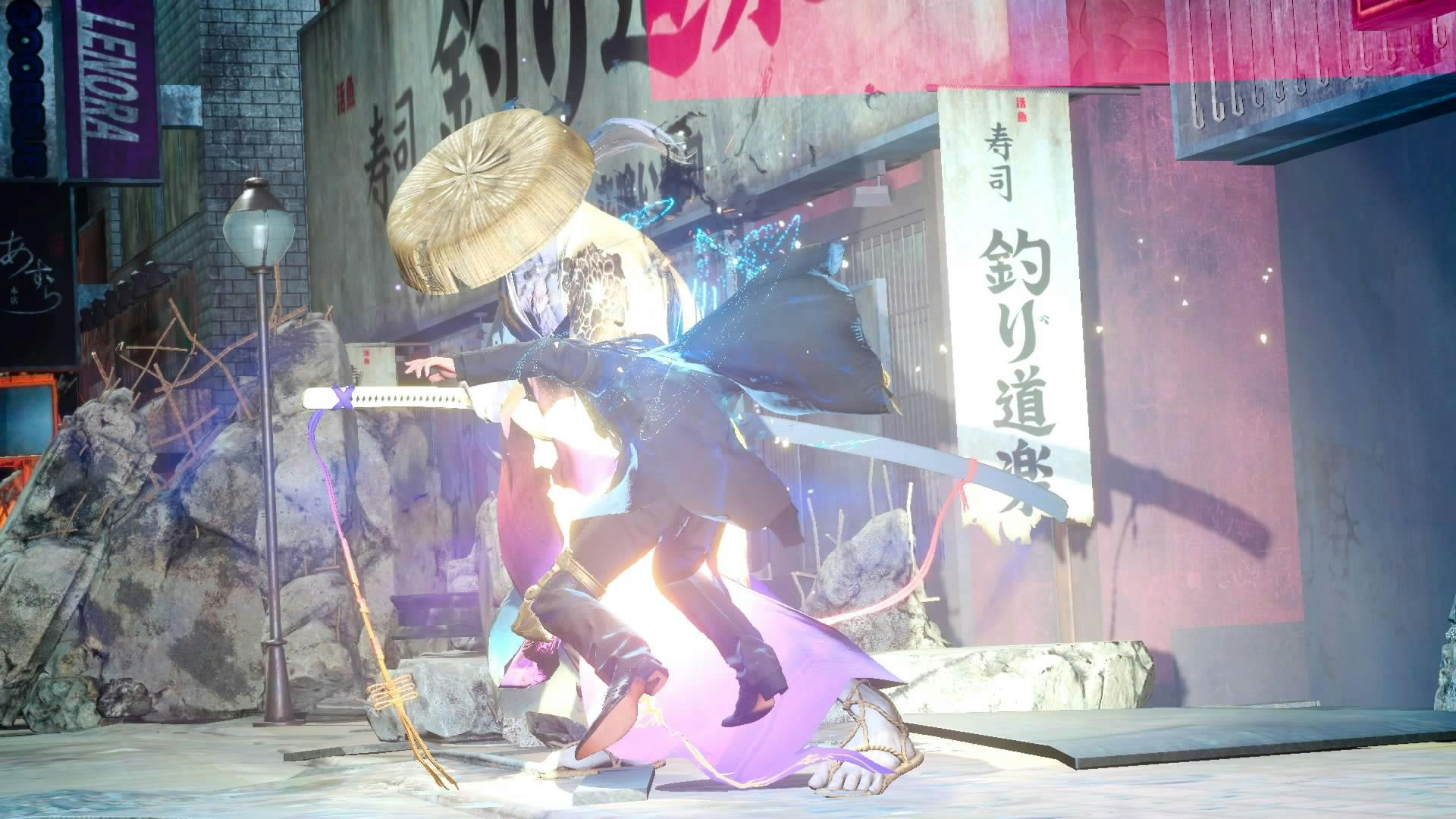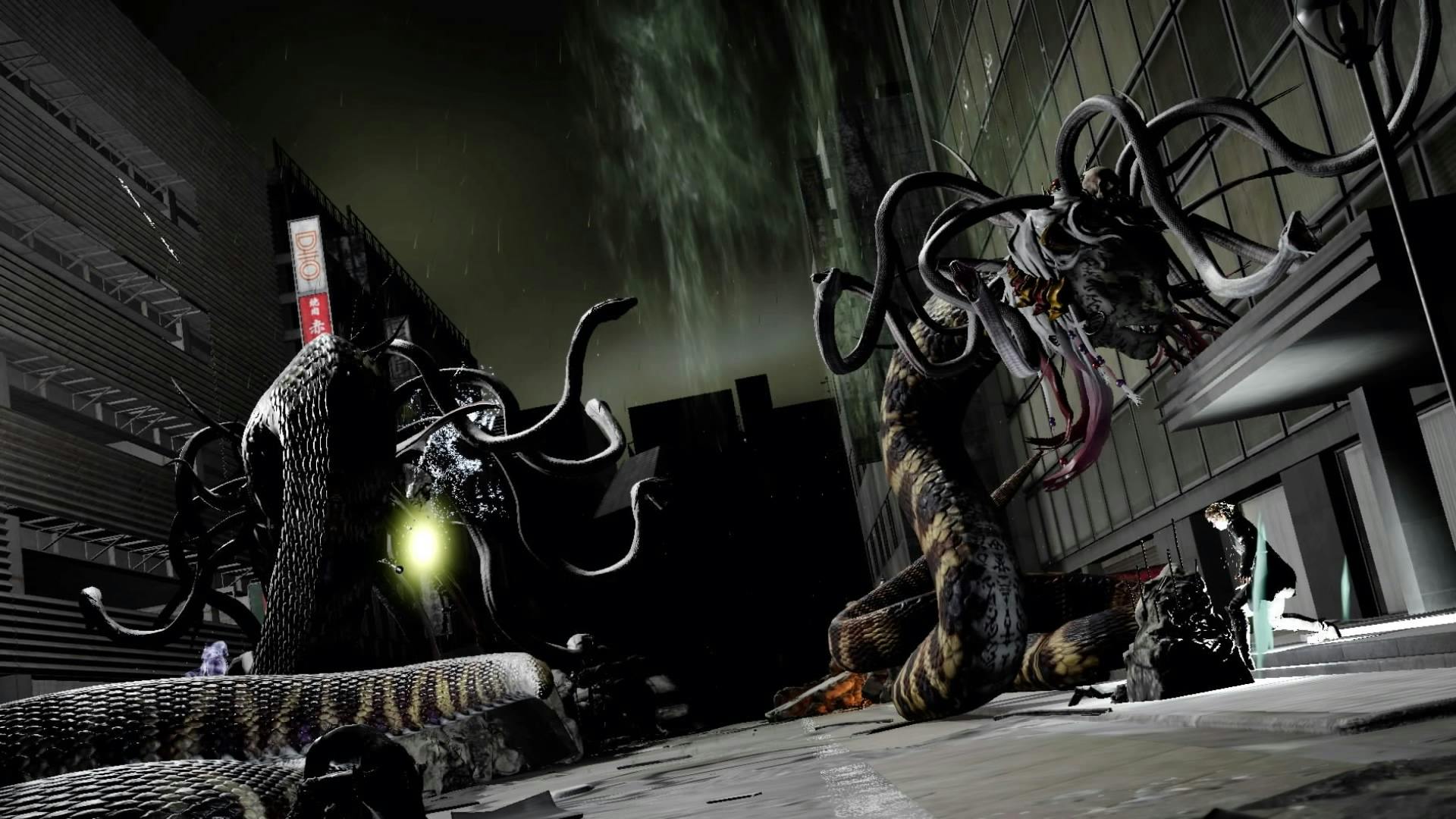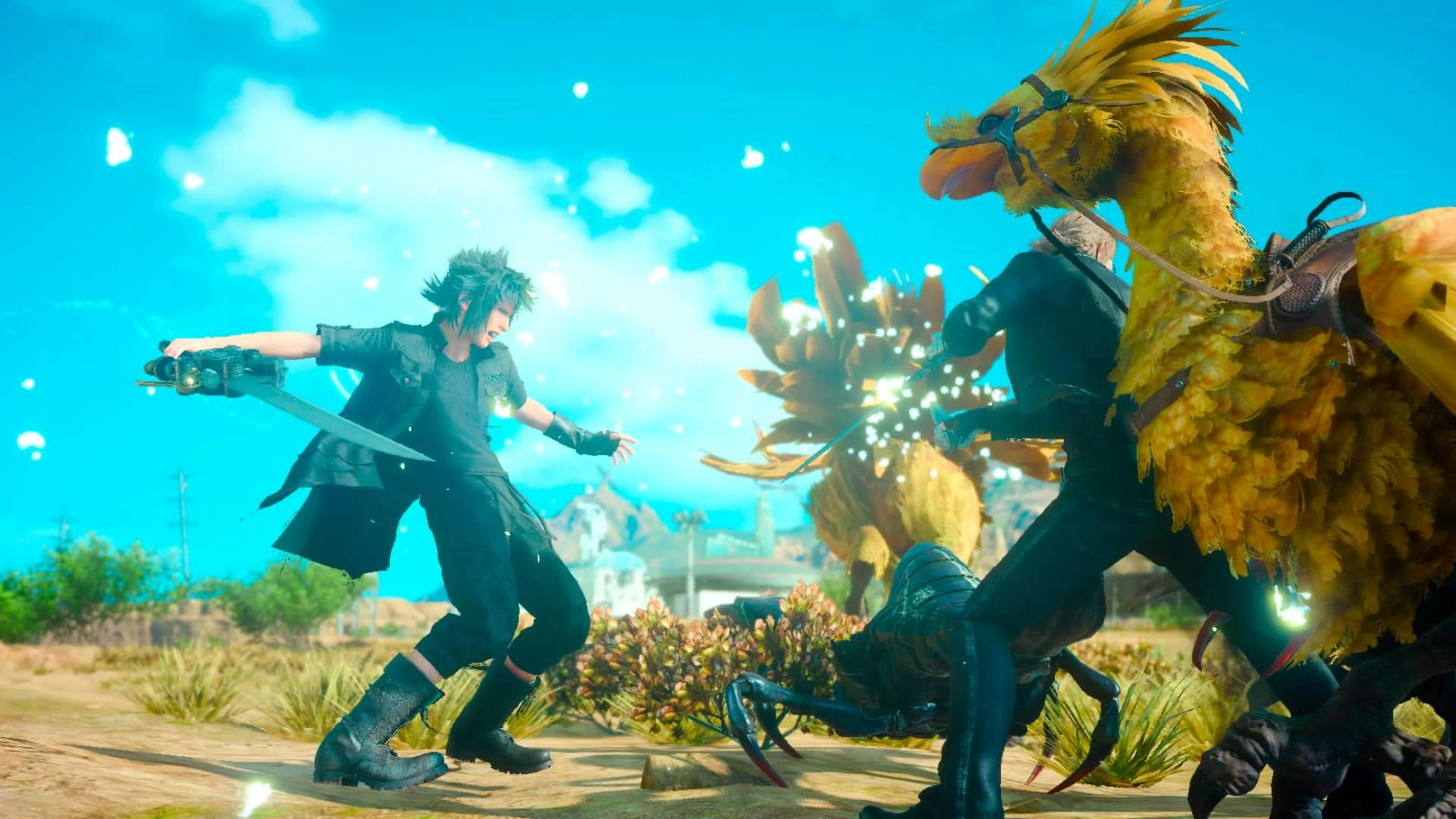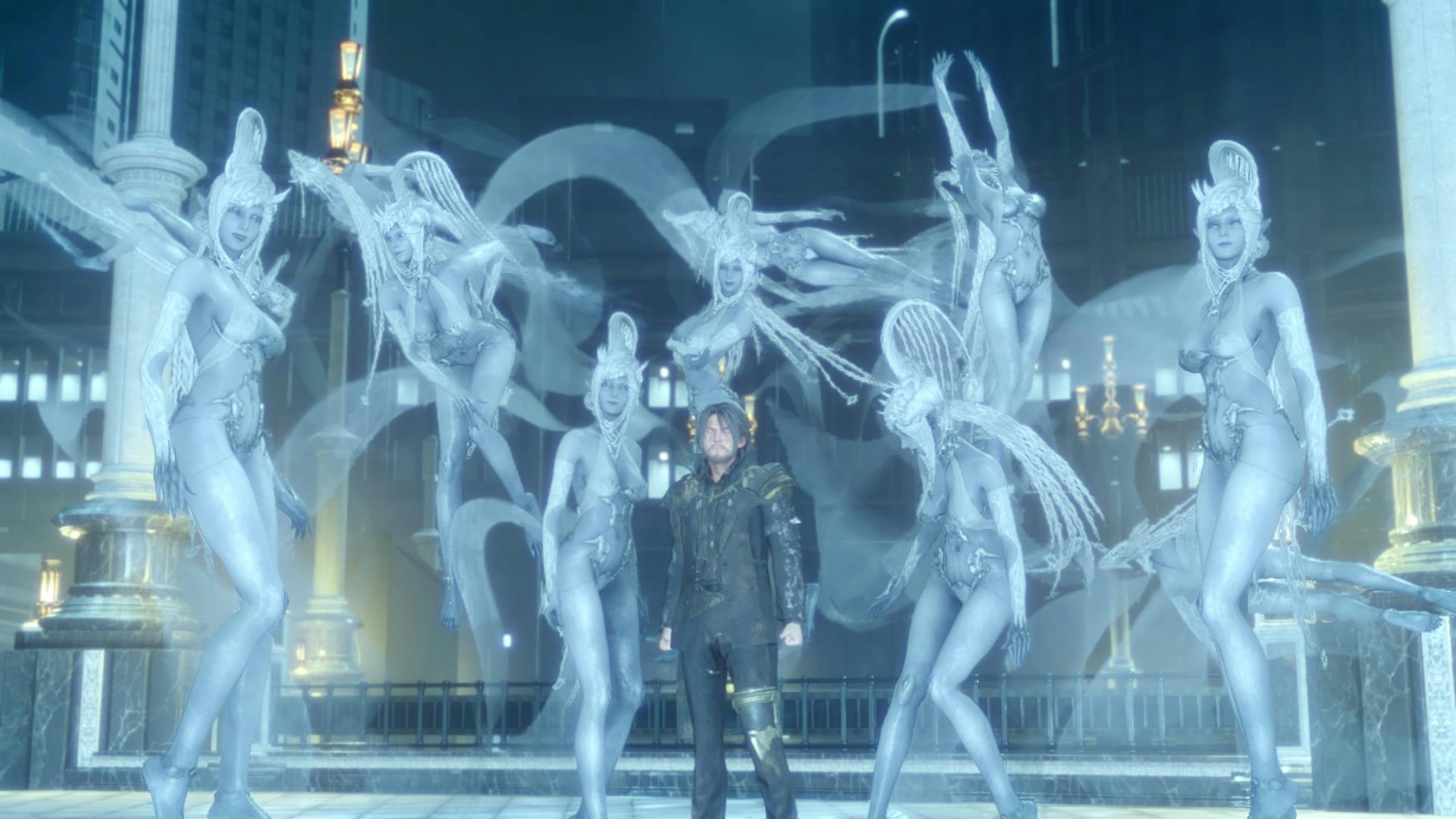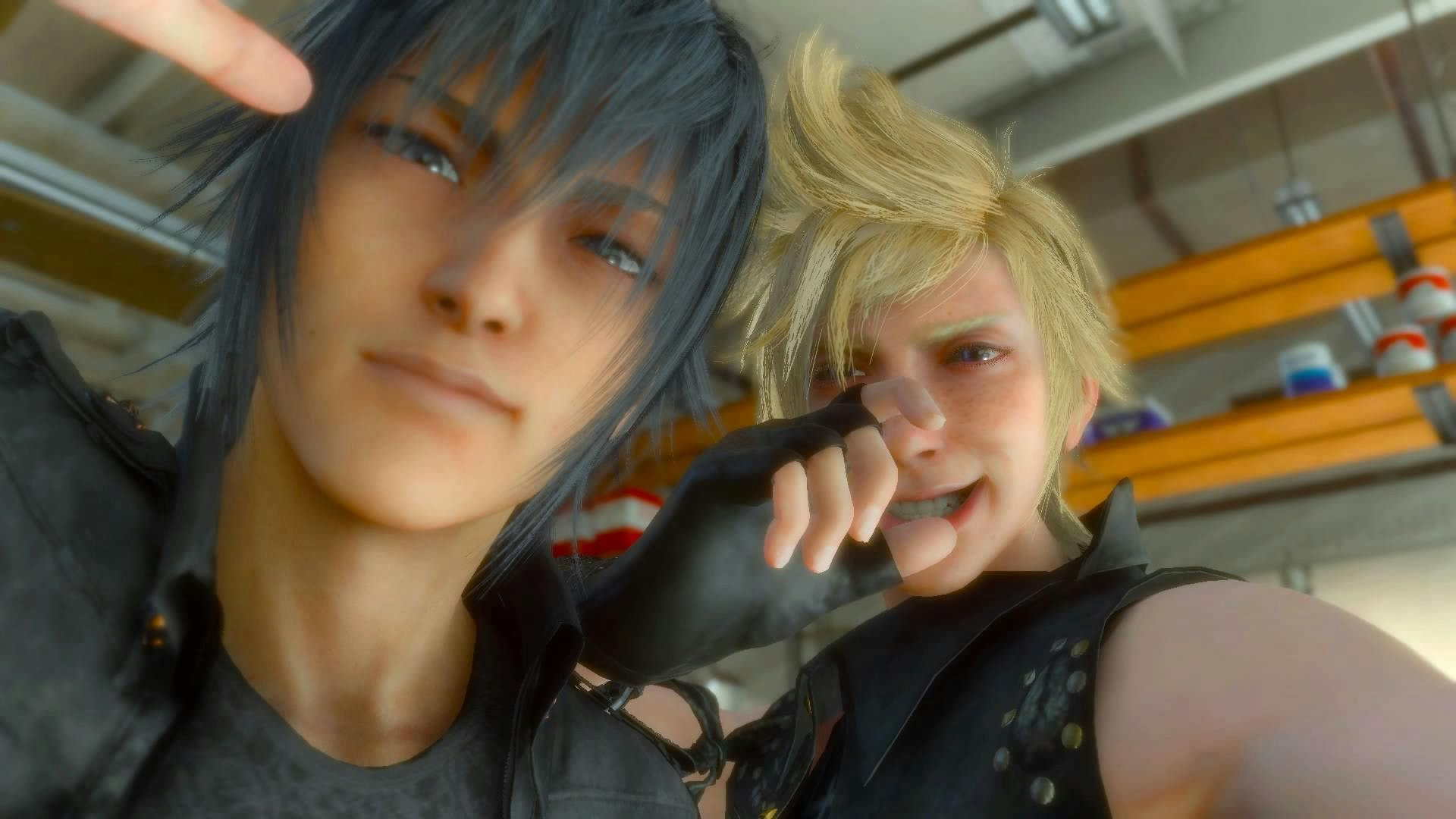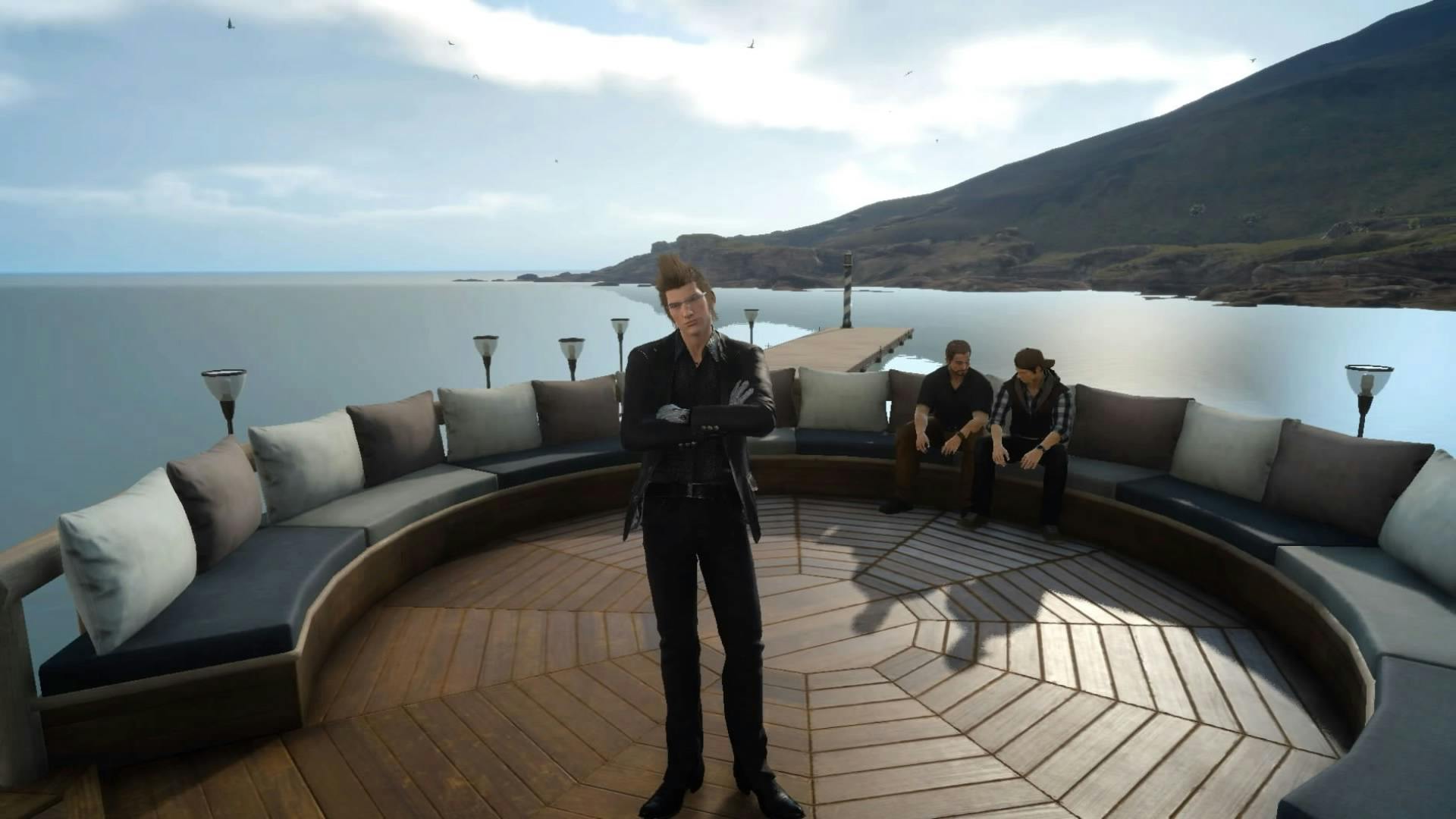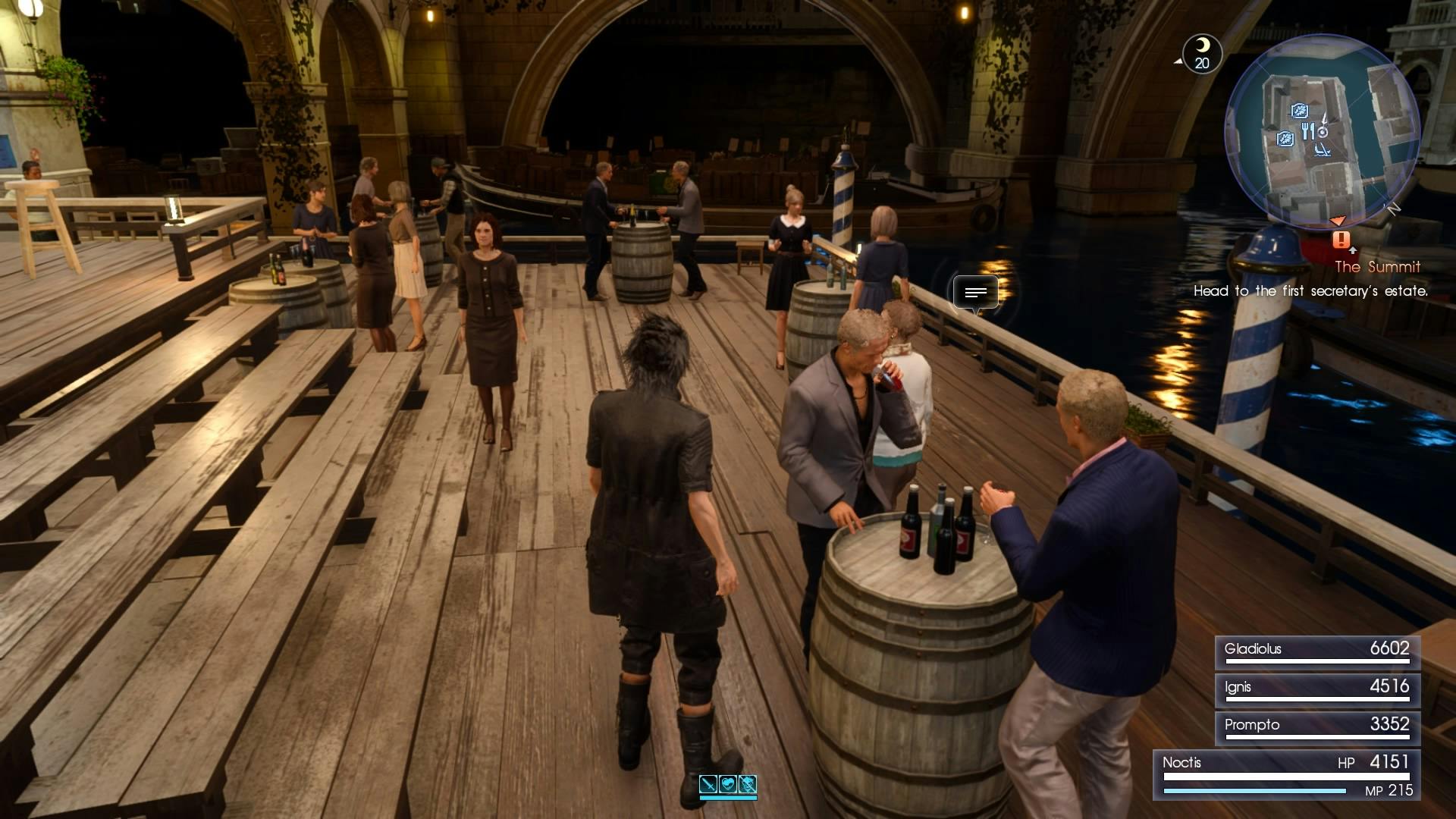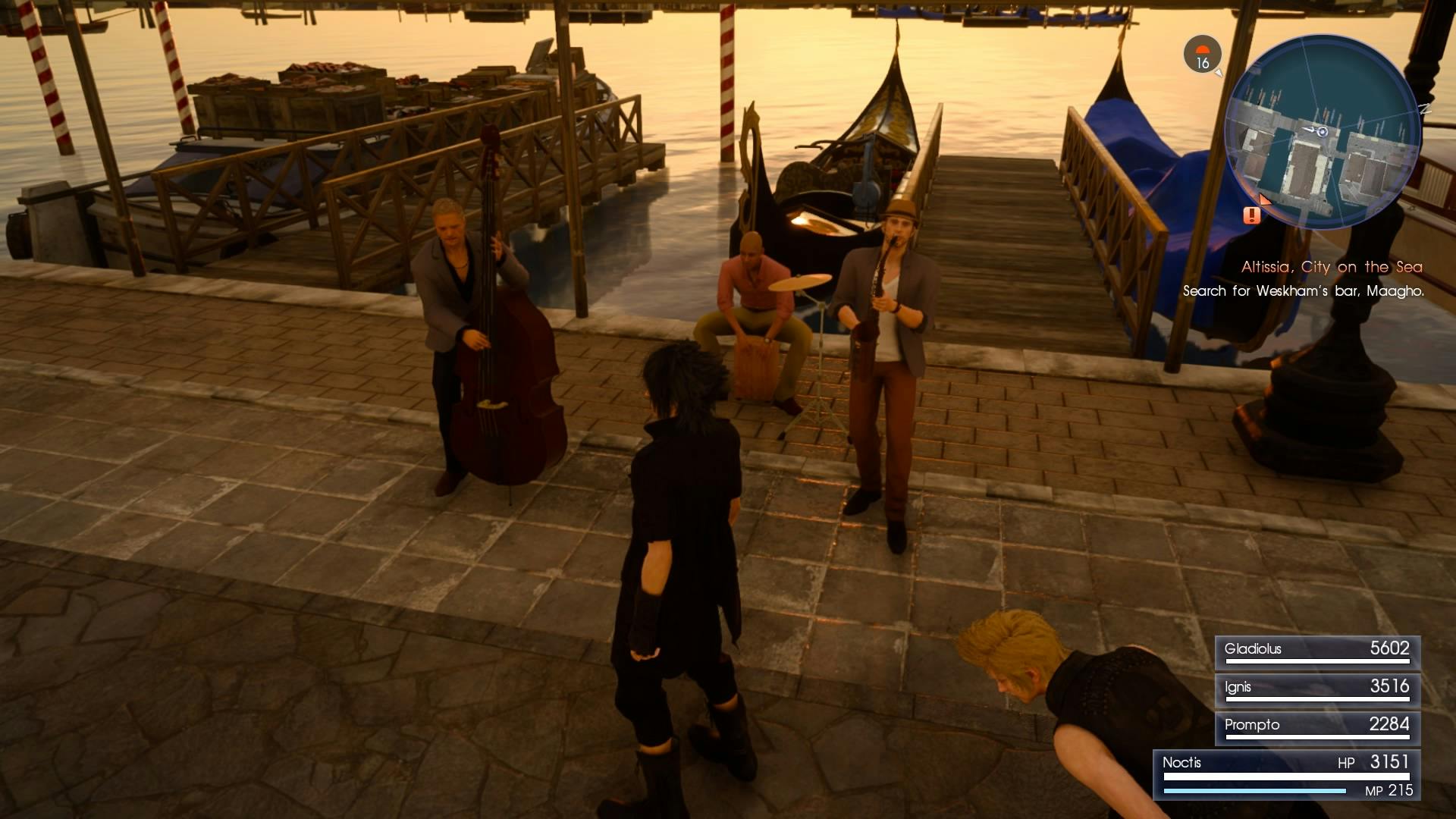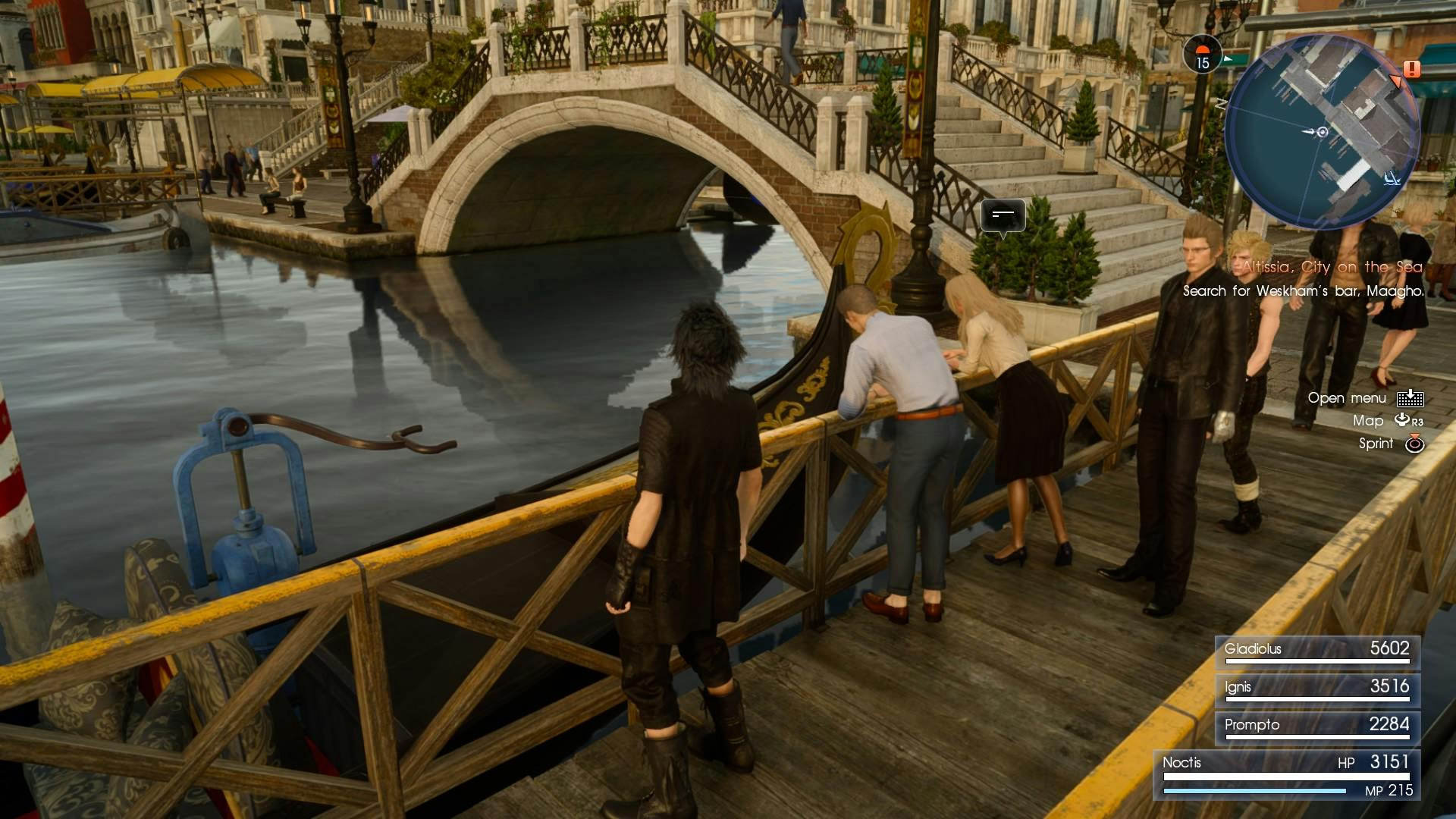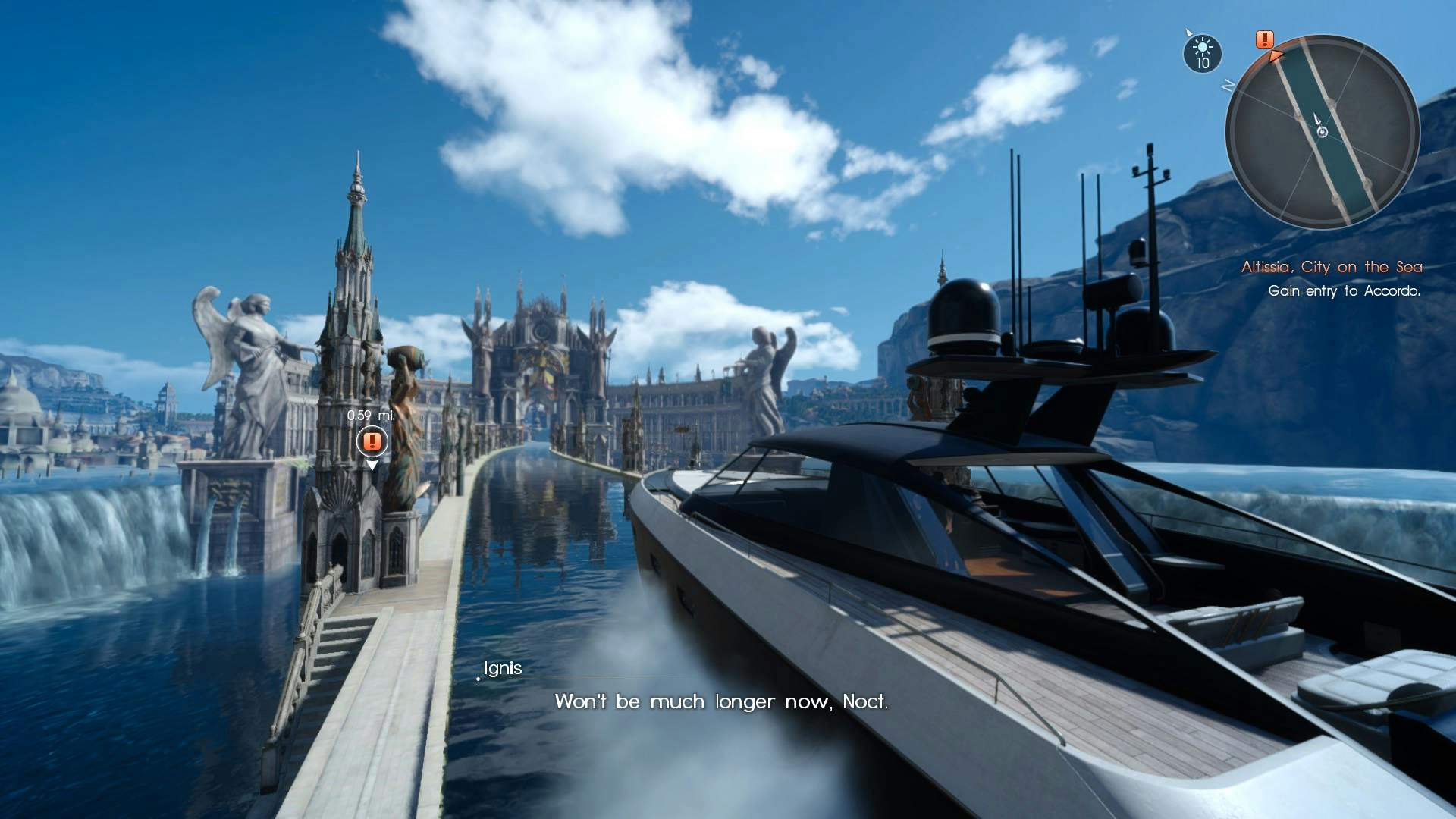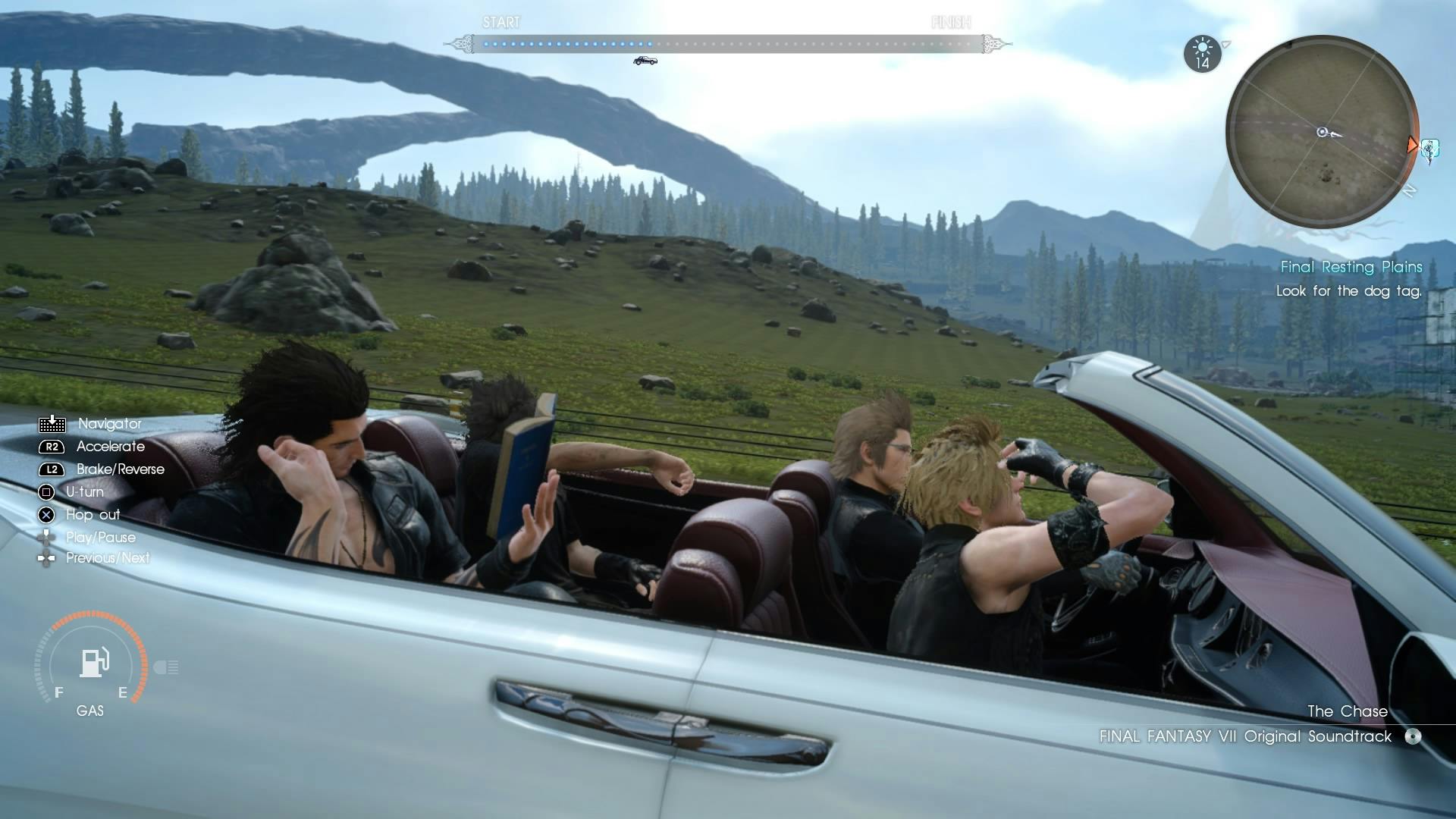For better or worse, there’s never been a Final Fantasy quite like Final Fantasy XV. In a series where mainline installments bear no relation to each other, this “sequel” makes the most of its creative freedom with a number of firsts for the series. At the forefront of this is a combat system that moves quick for a JRPG and an unusual party of fraternal friends. For fans, it’s practically impossible to play Final Fantasy XV without recalling the game’s storied 10-year development. It’s not necessarily a bad thing; even after putting in 100 hours of playtime, I was still in awe, telling myself that this game actually exists, plot holes and all.
While Final Fantasy XV takes a great deal of visual influence from real-world locales and aesthetics, it also uses old world, pre-20th century martial politics as the basis of its story. As part of a peace treaty between the warring lands of Lucis and Niflheim, it’s been arranged that protagonist Prince Noctis Lucis is to wed Lunafreya Nox Fleuret, an oracle and former princess of the province of Tenebrae. The game begins as Noctis and his protectors (and childhood friends) leave Insomnia, the capital city of Lucis, and set out to meet Lunafreya for the wedding. Meanwhile, the treaty signing at Lucis doesn’t proceed as planned, leaving Noctis conflicted on whether to return to his nation or continue on his road trip.
If Final Fantasy XV retained any of its original design philosophies as a foil to Final Fantasy XIII, it does so artistically with its earthly environments and inhabitants. The first visit to the many restaurants strewn over Eos—the game’s planetary setting—is a jarring sensation straight out of a Twilight Zone episode. Middle-aged men in striped polo shirts and young adults sporting hoodies and backward baseball caps aren’t the types of looks you associate with Final Fantasy fashion. Yet those are indeed the clientele in these greasy spoons, going about their meals like they’re on vacation.
This feeling of askewed familiarity is punctuated once you reach Altissia, a Venice-inspired city that could have been renamed Business Casualville. You chuckle at the sight of citizenry in blazers and ironed khakis, men who are confident enough to wear loafers without socks. Noctis moving among NPCs in packed hotels and courtyards could be mistaken for a scene straight out of the Hitman series, if not for the fact that he looks like a fish out of water. Much the like crew of the Enterprise visiting 1980’s San Francisco in Star Trek IV, Noctis’ foursome often appears out of place, not that the citizens of Altissia or Lucis notice or care. For a series known for its otherworldly settings and art direction, it’s both fitting and ironic that—by Final Fantasy standards—Final Fantasy XV’s look is the most otherworldly of them all.
The world progression is also a clear flip of the pathing of Final Fantasy XIII, as Final Fantasy XV is front-loaded with an impressively vast open world, only to funnel into a narrow, linear route during much of the story’s second half. The initial landmass you explore, which is made up of three blended regions, is so immensely rich with optional quests that you can easily spend your first 50 hours there without ever progressing to Altissia. If you were bold enough to go on foot along the lengthwise distance of the map, you’ll find it larger than many JRPG open worlds, particularly that of Namco Bandai’s Tales franchise.
This expansiveness is magnified by the 100-plus side missions and monster hunts. You’ll be driving over myriad stretches of highways multiple times as you check off objectives and temporarily boosting stats at the many diners. When you’ve passed the 100 hour mark, you’ll have felt like every dozen yards has had some purpose, even if it’s to take on an unexpected foe. This first area is where Final Fantasy XV flaunts its road trip exploration designs, showcasing the crew’s car, the stylish Regalia. This posh sedan could have positioned itself as the proverbial fifth party member, if not for its reduced usefulness due to fast travel and the eventual availability of the off-road-friendly Chocobos.
Like many areas of Final Fantasy XV, scenes of riding in the Regalia effectively showcase the chemistry between Noctis and his lifelong friends. It’s a kind of brotherhood steeped in sarcasm, bad jokes, and reflections on life in general. It’s all the more fitting that you begin the game with the entire party of four, which is uncommon for a JRPG. They often chat about recent events, whether it’s a shared sigh of relief over surviving an enemy encounter to something verging on the edge of gossip after a conversation with a supporting character outside of the party. Reminiscent of Nathan Drake’s reactionary dialogue in the Uncharted series, this gang often expresses what the player thinks, like conveying fatigue when you’ve spent over 30 minutes in a dungeon. As with most any JRPG, Final Fantasy XV’s party dialogue makes room for light-hearted commentary despite the prevailing seriousness of the overarching story. You can’t help but laugh when one of Noctis’ friends’ post-battle reactions is to celebrate the win by eating something dead.
Ensuring you’re not Malboro food is to forego any expectations that Final Fantasy XV’s combat resembles anything you’ve played in previous installments. Turn-based battles are non-existent and magic—while effective—is practically relegated to a secondary role due to being a resource that’s a hassle to replenish. The crux of the action is akin to Kingdom Hearts’ real-time combat, where it plays more like an action RPG. As with any well-crafted, fast-paced combat in a 3D space, the lock-on camera is an essential tool. It ensures you’re continuing to deal damage even if you’re having trouble seeing every blow that you’re dealing to a Cactuar, a Ronin, or the many other enemy types that populate Eos. In equal measure, combat also places a strong emphasis on defense, where you’re not only encouraged to dodge and parry, but also maneuver your way to a prey’s rear end. Offense at this position will trigger coordinated attacks with your party and almost always deals damage greater than if you continued to fight your target head on. This ensures that every battle is engaging; it is only when you’re 10 levels above your foe that you can get away with passive mashing of the attack button.
Your trusted friends are often capable fighters, though their high level of autonomy does not nerf the challenges of combat, nor do you feel like you’re missing out by not being able to micromanage. There’s a satisfying middle ground when it comes to issuing commands to your friends. It’s only by Noctis dealing damage alone at regular intervals that he is able to enlist a friend’s equipped skill, whether it’s throwing a potent explosive or syncing teammates for a single powerful attack. Such abilities are earned through general progress and redeemed by unlocking slots in the game’s skill tree.
For every JRPG rule that Final Fantasy XV breaks, there is a genre tradition or tropes that it adheres to. You can be sure that boss fights and dungeon investigations help break up the general areas of overworld exploration and encounters against countless lesser enemies. Familiar plot devices are utilized like extreme predicaments that will test the party’s bonds of friendship. This also includes the obligatory JRPG “separation and deprivation” segment where the main character is temporarily broken off from his team and has to fend for himself with limited weapons and abilities. Unfortunately, this particular section is a bloated chapter that goes 30 minutes beyond its welcome. It fails at impressing the player with jump scares and is needlessly padded with keycard fetching in order to move past certain doors.
This chapter’s ineffectiveness is one slight issue in a collection of minor problems. One of the reasons why the aforementioned lock-on camera is a lifesaver is because battles within heavy vegetation and indoor areas can be visually troublesome and intrusive, especially when you’re trying to make every hit count against enemies above your weight class. Other grievances include long loading times when fast travelling or loading a save file, a handful of vague quest objectives, and an unremarkable pinball-inspired minigame.
Standing out amongst these shortcomings are problems with the spotty narrative. Guest appearances by supporting characters feel short lived. Their backstories are intriguing enough that had this been any other JRPG, their issues would be explored in a five hour detour. The same can even be said for minor antagonists, some of whom appear with unusual brevity (though they’re featured more prominently in the Kingsglaive spin-off film).
The lack of exposition and insight into these supporting characters are issues one can look past, given the focus paid toward Noctis’ team. The fact that you begin the game with the complete gang is unheard of in the series. The lack of “how party member X first met party member Y” interludes works for Final Fantasy XV. Still, it’s not a good sign when additional media is needed to gain a modicum of context for the game’s specific narrative. These seemingly half-baked moments plant the idea in the player’s head that the studio might’ve had bigger plans for these scenes. Even if it’s hard to substantiate any suspicion of a rushed development, the latter half of the story moves at an unusually brisk pace and can be cleared in less than 10 hours—short for a JRPG. If there’s any post-story solace, it’s in the convenient ability to revisit all the open world areas after the credits, which is a helpful feature for completing the remaining side quests.
Every mainline Final Fantasy sequel has—in varying degrees, but more so in the last five releases—redefined what a Final Fantasy game is. It’s certainly the case for Final Fantasy XV, which is very much a product of its times, where consuming transmedia products is essential for understanding context in the world of Eos and the motivations of the game’s cast beyond Noctis and his gang. Final Fantasy XV overcomes its narrative lows with gameplay highs that consume the player’s time with engrossing optional quests and frenetic battles. As a whole, it does not represent the best in the series, but it delivers just enough to deserve a place in the mainline series, which is an achievement for a game that originated as a Final Fantasy XIII spin-off.
Score: 4 out of 5
Disclosure: A PlayStation 4 digital copy of Final Fantasy XV was provided by Square Enix for review 12 days prior to release.

